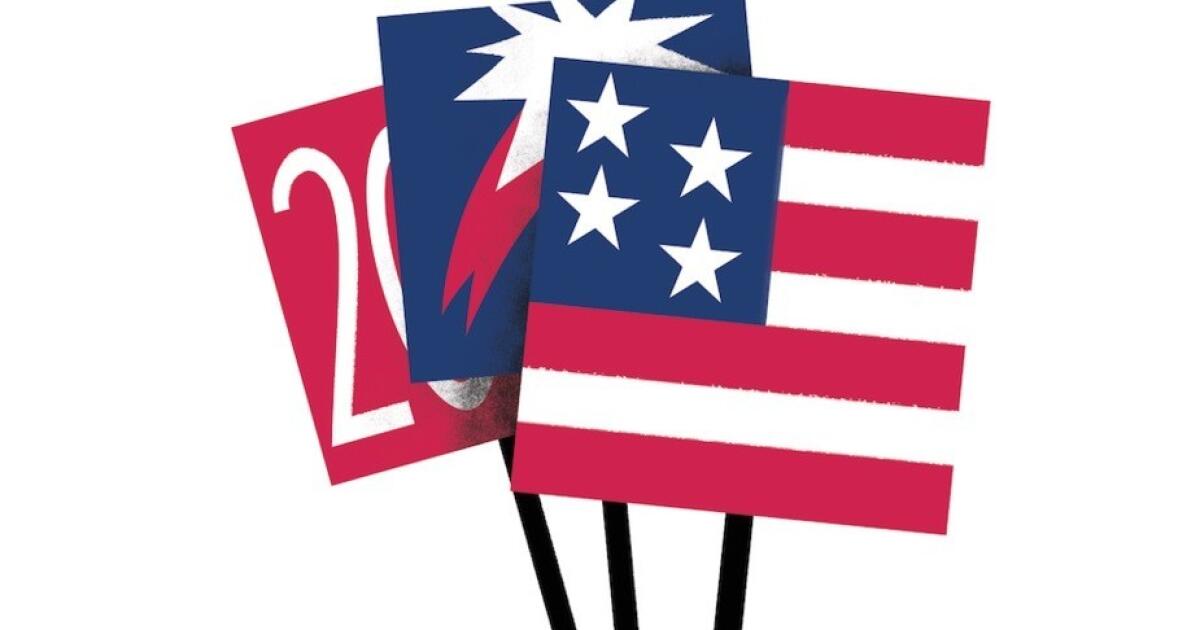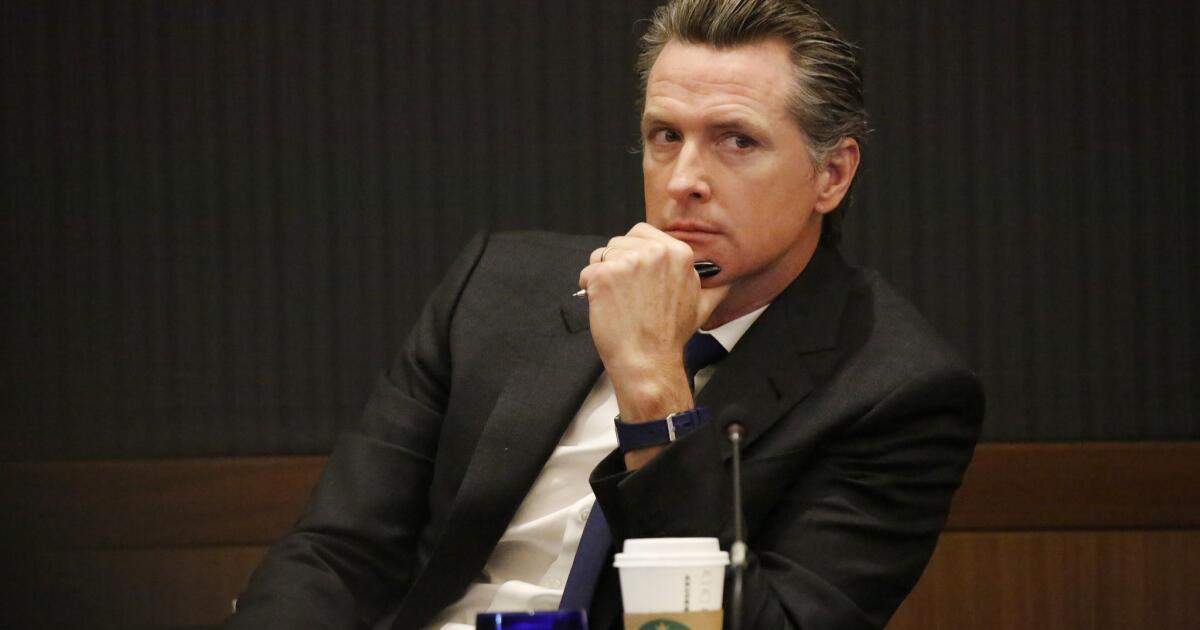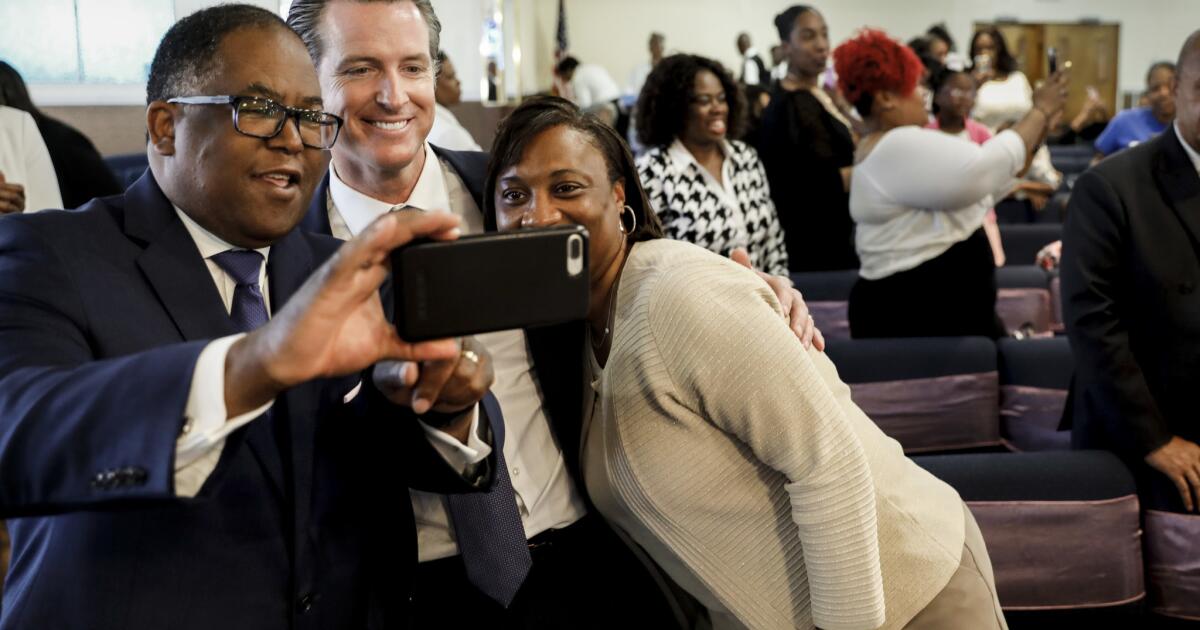Essential Politics: The new face of the Trump administration
There were no air kisses this time around, as Anthony Scaramucci made his weekend television debut as White House communications director.
I’m Christina Bellantoni. Welcome to the Monday edition of Essential Politics.
The newly appointed, politically inexperienced Scaramucci — known as “The Mooch” at the White House — was slick, polished and addressed his boss directly during a round of Sunday show appearances.
But he was put to the test right away, given President Trump had raised the specter of presidential pardons Saturday. Declaring his “complete power” to grant them in a string of angry tweets that reflect his growing concern about the widening criminal investigation into potential collusion with Russia, Trump also said it’s too soon to consider pardons.
Can he even legally do so? Legal opinions are mixed.
In a statement Monday, senior White House adviser Jared Kushner denied that Trump’s campaign colluded with Russia. “I did not collude, nor know of anyone else in the campaign who colluded, with any foreign government,” Kushner said in the statement.
THE NEW FACE OF THE WHITE HOUSE
Meet Scaramucci, a Long Island native, outer-borough New Yorker without government experience who has ascended through the business world — and television media — to leap directly into the Trump administration.
In introducing himself to the nation, Scaramucci promised to above all else be loyal to the president, to aggressively try to stop leaks to the press and to help Americans understand just how awesome his boss is — no matter what he’s said previously.
Will he take that message to the state that Trump lost by millions of votes? We may soon find out. The new communications director is scheduled to appear in Southern California this weekend at the third annual Politicon in Pasadena.
And as Sean Spicer heads for the exit, we relive his greatest hits (and misses).
Get the latest about what’s happening in the nation’s capital on Essential Washington.
ABOUT CALIFORNIA’S CLIMATE DEAL
State lawmakers just voted to extend California’s cap-and-trade program, a key tool for reducing greenhouse gas emissions. But how does the program work? And how would it be changed by new legislation? Chris Megerian and Joe Fox go through all the details here.
Patrick McGreevy also takes a look at the fire prevention fee levied on nearly 800,000 rural California properties that was so reviled by Republican lawmakers, landowners and taxpayer groups that they tried a referendum, a lawsuit and five pieces of legislation to repeal it during the last six years. A measure to suspend and eventually repeal the fee was finally approved by the Legislature — after Democrats offered it as a bargaining chip to entice Republicans to help pass cap-and-trade.
REPUBLICAN DRAMA UNFOLDS IN SACRAMENTO
The bipartisan vote was noticed from coast to coast. But for some Republicans it left a feeling of betrayal, despite longtime GOP leaders saying that Ronald Reagan would have been proud of the deal.
Assembly GOP leader Chad Mayes was challenged for joining Gov. Jerry Brown and Democrats on the cap-and-trade vote. Mayes seemed to maneuver through the tough position with enough support to continue leading, but got the bad news that one of his lieutenants was resigning in protest.
He defended himself and the other Republicans who voted for cap-and-trade in a Wall Street Journal piece last week.
COGDILL PASSES AWAY
Eight years ago, another Republican defied his party to work with Democrats (and then-Gov. Arnold Schwarzenegger) on a major issue facing California’s government.
Dave Cogdill, whose bipartisan vote cost him his leadership seat, died of pancreatic cancer. He was 66.
Sacramento bureau chief John Myers details Cogdill’s role in the 2009 budget crisis, and how his legacy was honored.
A LITTLE BREAK
Legislative recess began with little fanfare after a busy start to the week with the cap-and-trade vote. Lawmakers will return to Sacramento Aug. 21.
We’ll be covering the continued fallout on this issue, along with Brown’s signing of the measure into law. Follow along with us on our Essential Politics news feed.
THAT WAS QUICK
Republican David Hadley abandoned his bid for governor two weeks after launching his campaign. Seema Mehta reports the former state lawmaker concluded that he could not win.
WHAT’S DELAINE EASTIN THINKING?
Eastin knows she’s up against some pretty major Democratic heavyweights in the 2018 governor’s race, but insists she’s not intimated. The former state schools chief jumped into the race last fall because, she says, the Democrats ruling over Sacramento weren’t doing enough for public school kids.
Eastin, who hasn’t held public office for almost 15 years, sat down with Phil Willon in a Sacramento coffee shop recently to talk about her odds in the race, her politics and her frustrations with the state’s leadership.
WORKING TOGETHER
Celebrating rare cooperation between California and the Trump administration, Brown and federal officials on Friday marked the start of a more than $1.3-billion project to convert the Caltrain service between San Jose and San Francisco from diesel to electric trains.
The Brown administration, which has disagreed with Trump over issues ranging from climate change to immigration, joined congressional Democrats in aggressively lobbying the White House and U.S. Department of Transportation for federal funding of the project when it appeared to be in jeopardy.
PARTY CHAIR ERIC BAUMAN SURVIVES CHALLENGE
A California Democratic Party commission on Saturday upheld the election of Eric Bauman as party chair and rejected allegations by his rival that the vote may have been tainted by ballot stuffing and other wrongdoing. Still, don’t expect Democratic activist Kimberly Ellis, who lost by just 57 votes and challenged Bauman’s election, to go away quietly, Willon reports.
Ellis already has indicated that she may take her case to the courts, saying the party panel that reviewed the election results was biased in favor of Bauman. The compliance review commission met all day on Saturday to examine 355 ballots deemed questionable out of the nearly 3,000 cast by party delegates. In the end, 47 ballots were ruled invalid. And that was not enough to change the outcome.
TO WIN THE HOUSE, DEMOCRATS MUST TOPPLE CALIFORNIA REPUBLICANS. HERE’S HOW THE MONEY RACE LOOKS TODAY
The 13 races identified by the Los Angeles Times as potentially competitive in 2018 have more than 60 candidates combined, with more people showing interest daily.
Sarah Wire and Christine Mai-Duc dug through their campaign finance reports to get a sense of the state of the race. California’s congressional races are pivotal to Democratic efforts to flip the House. Republicans have a 24-seat advantage in Congress, and Democrats’ path to a majority likely includes at least a few of the 14 California districts currently held by the GOP.
Mike Levin, taking on Rep. Darrell Issa (R-Vista), has the biggest war chest so far of any California challenger.
Bryan Caforio, who’s looking for a rematch against Rep. Steve Knight of Palmdale, raised nearly as much money as the incumbent in the latest quarter, but despite lackluster fundraising Knight still has a cash advantage with $403,301 in the bank as of June 30.
Two other developments about the battle for House control:
A former Obama White House advisor joins a growing list of Democratic challengers to Rep. Mimi Walters of Irvine. Brian Forde, who previously served as a senior advisor on technology to President Obama, jumped into the race for the 45th Congressional District last week.
Plenty of Democrats have lined up to run against Rep. Dana Rohrabacher (R-Costa Mesa), but he’s just drawn his first Republican challenger of 2018. Stelian Onufrei, a Romanian immigrant who owns a construction company, says he’s running against Rohrabacher, whom he calls a “political lightning rod.”
POLITICAL ROAD MAP: THE QUIET PART OF THE CAP-AND-TRADE DEAL
There’s one part of last week’s cap-and-trade deal that won’t play out politically until next year. And as John Myers pointed out in his Sunday column, it’s a ballot measure that Republicans hope will force lawmakers into an uncomfortable position in a few years: signing off on how climate change cash is spent, which includes Brown’s controversial high-speed rail project.
TODAY’S ESSENTIALS
— This week’s California Politics Podcast focuses entirely on the big cap-and-trade deal, and its political implications for Republicans and Democrats.
— Backers of an effort to remove state Sen. Josh Newman (D-Fullerton) from office through a recall election have gone to court to block a change to the rules pushed through the Legislature by Democrats.
— Brown signed a bill exempting Marin County from the state’s affordable housing laws.
— California’s real estate agents have written a proposed 2018 ballot initiative that could lower the property taxes of millions of homeowners who sell their current house and buy a new one.
— Atty. Gen. Xavier Becerra is keeping the pressure on Trump on the DACA program for children brought to the United States illegally.
— Rep. Ed Royce stopped Rohrabacher from going to Russia last spring, a senior GOP aide said. The news came on the heels of reports that Rohrabacher was encouraged by the Russian government to hold hearings on sanctions.
— John Chiang used superhero destruction to talk up infrastructure needs at Comic-Con in San Diego.
— Two California House members were sued for displaying rainbow flags outside their Capitol offices.
— Sen. Kamala Harris wants to study whether cash bail is the right way to decide if someone stays in jail pretrial.
— With Nevada suffering a shortage of legalized marijuana, California’s state pot czar said efforts are being made in her state to make sure sufficient licenses go to farmers, testers and distributors to supply retailers. Providing temporary, four-month licenses to support some businesses including growers is planned “so we don’t have a break in the supply chain,” said Lori Ajax.
— Senate Republicans aren’t even sure what they’ll be voting on when the repeal-only healthcare bill comes to the floor this week.
— The Southern California factory that makes most of Trump’s “Make America Great Again” hats — the one we stepped inside almost two years ago — was in the spotlight again during “Made in America” week. Facing questions about the continued manufacture of Trump-branded goods outside the U.S., the president’s campaign sent out a press release touting that all merchandise sold by the campaign is “made right here in America,” including the hats, which are made in the Cali-Fame factory in Carson.
— The Trump presidency is hurting his Los Angeles-area golf course.
LOGISTICS
Essential Politics is published Monday, Wednesday and Friday.
You can keep up with breaking news on our politics page throughout the day for the latest and greatest. And are you following us on Twitter at @latimespolitics?
Miss Friday’s newsletter? Here you go.
Please send thoughts, concerns and news tips to [email protected].
Did someone forward you this? Sign up here to get Essential Politics in your inbox.


